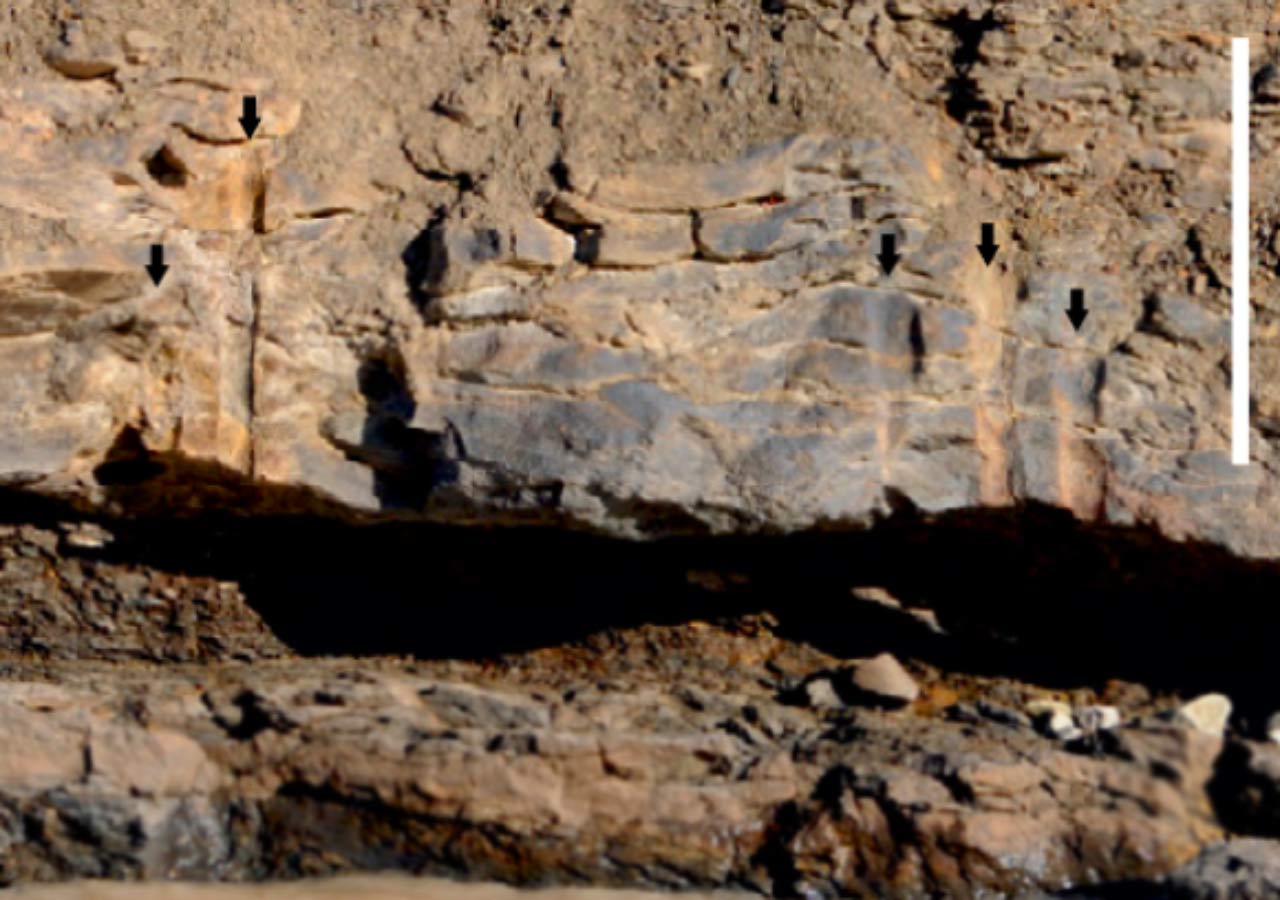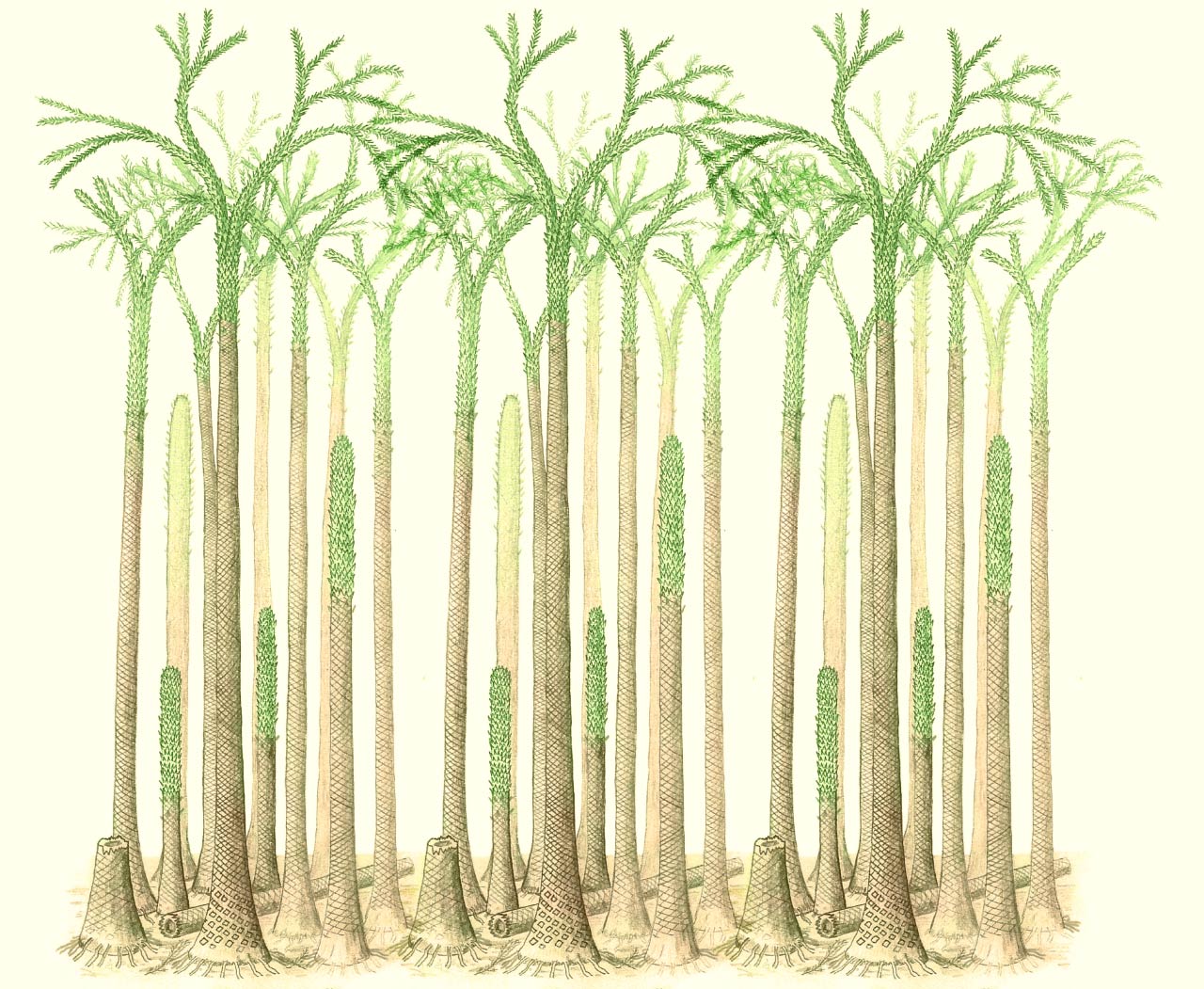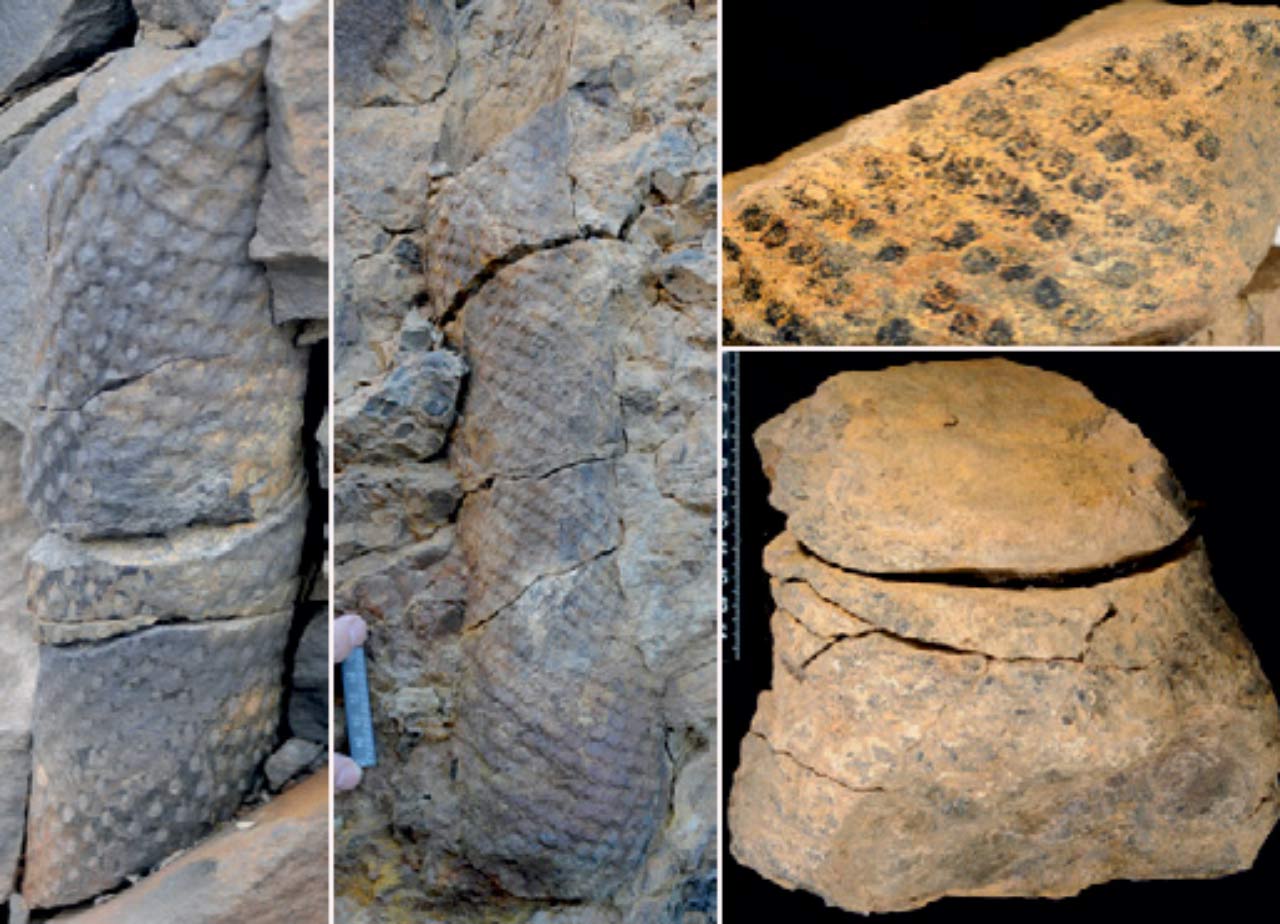The fossil forests in Svalbard were formed mainly of lycopod trees, better known for growing millions of years later in coal swamps that eventually turned into coal deposits.
The forests grew near the equator during the Late Devonian, according to the paleontologists - Dr Chris Berry of Cardiff University and Prof. John Marshall of the University of Southampton.
They were extremely dense, with very small gaps around between each of the trees, which probably reached roughly 13 feet (4 m) high.
"In-situ trees are represented by internal casts of arborescent lycopsids with cormose bases and small ribbon-like roots occurring in dense stands spaced 8 inches (20 cm) apart, identified as Protolepidodendropsis pulchra," Dr Berry and Prof. Marshall wrote in a paper published recently in the journal Geology.
"These fossil forests shows us what the vegetation and landscape were like on the equator 380 million years ago, as the first trees were beginning to appear on the Earth," Dr Berry said.
"The Middle to early Late Devonian transition from diminutive plants to the first forests is a key episode in terrestrialization," the scientists explained.
"The two major plant groups currently recognized in such transitional forests are pseudosporochnaleans (small to medium trees showing some morphological similarity to living tree ferns and palms) and archaeopteridaleans (trees with woody trunks and leafy branches probably related to living conifers)."
"We report a new type of transitional in-situ Devonian forest based on lycopsid fossils from the Plantekløfta Formation in Munindalen, Svalbard."

"During the Devonian period, it is widely believed that there was a huge drop in the level of carbon dioxide in the atmosphere, from 15 times the present amount to something approaching current levels," Dr Berry said.
"The evolution of tree-sized vegetation is the most likely cause of this dramatic drop in carbon dioxide because the plants were absorbing carbon dioxide through photosynthesis to build their tissues, and also through the process of forming soils.
Refercene: Christopher M. Berry & John E.A. Marshall. Lycopsid forests in the early Late Devonian paleoequatorial zone of Svalbard. Geology, vol. 43, no. 12, p. 1043-1046; doi: 10.1130/G37000.1





1. That region had tropical climate once in it lifetime, assuming also else was the same as today?
2. The earth has titled, before that region was the equator?
3. Fossils from that region have appeared to be naturally transported to that region from another tropical region at the equator?
4. Earth is expanding, what was at the equator appears now to be close to the north pole?